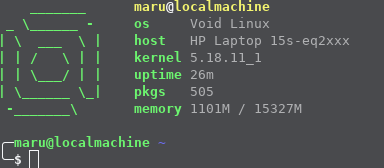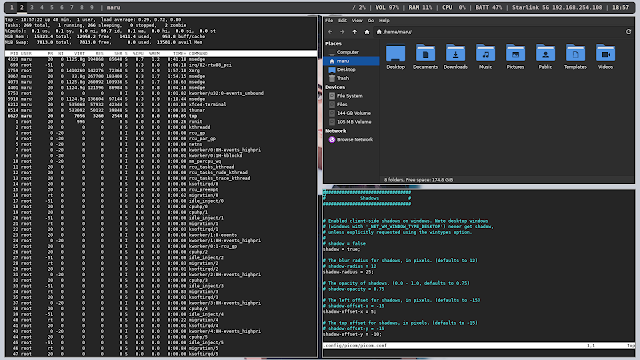
Living in the "Void" - Void Linux Experience
This is a blog that I made way back 2022 from the old blogger site and just decided to transfer the blog here. Also note that today, I’m using Fedora 40 so I cannot further improve whatever I might have missed.
Start
I’ve been using VoidLinux for about a week now. Here’s my journey with it.

Void Linux pfetch running in my machine
Void Linux is a Linux distribution that I always wanted to try as my main Linux desktop operating system. The first time I heard this pretty peculiar distro was from distrowatch just as they updated their ISO (October 2021) when I was looking for a different Linux to try and hop into. It didn’t really catch my attention the first time since I was not into exploring distributions with a much more different init system called “runit” which I thought was very different from the typical “systemd” init system found in many other Linux distributions.
So now that my school year is technically over, I decided to try and use Void Linux as my primary Linux OS, wiping my Arch installation as I am also tired of having a bleeding edge distro that may break if I don’t update frequently. I started by going to their website voidlinux.org and downloading the image I wanted to try. I am shocked at how many architectures they support! Heck, they even support PowerPC from ancient apple computers which is wild. They also give you choice if you want to use glibc or musl. And to be honest I don’t know how different both of the C libraries are, other than knowing that most if not some of the programs aren’t compatible with musl since it’s a different library so I just proceeded with glibc version.

Void Linux download page
Downloading and writing it to the USB flash drive is an easy task. So after I burned the ISO file, I booted my machine to the UEFI boot manager and booted to the flash drive which I was again shocked at how quick it booted to the login screen.
You can basically install Void using their TUI installer which can be started by running the command “void-installer”. But I have problems with grub being undetected on my UEFI System (f.u. HP ;p). So I installed mine using chroot as just a barebone system and configured it to use gummiboot bootloader. In terms of applications and desktop environment, I decided to just use BSPWM as my Window Manager and the rest of the applications I needed such as file manager, browser and setting up GVFS for accessing the NTFS partition that I have for sharing files in between Linux and my Windows Dualboot.

BSPWM setup in my Void Linux Install
I can’t deny that there’s some learning curve that I have to get over within this distro especially since it is not using the systemd init system as most of the distributions out there. Though packages are not really that much of a problem since the base system that I configured has all of the packages that I need from the official repository. There’s an exception, the lack of chromium-based browsers or specifically “Microsoft Edge” (which ironically I have no choice since it’s the only browser that works for Microsoft teams without installing flatpaks/snaps), I used xdeb tool by toluschr to convert Microsoft’s deb package of Edge to a xbps file that Void Linux supports. Other than that, I definitely don’t have any problems using this distribution as my daily driver. The speed, uniqueness, freedom, lightweightness, and most of all, the stable rolling release nature of this niche distro make it very appealing for my use case.